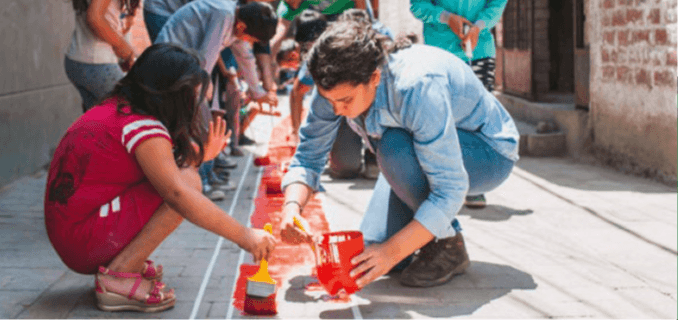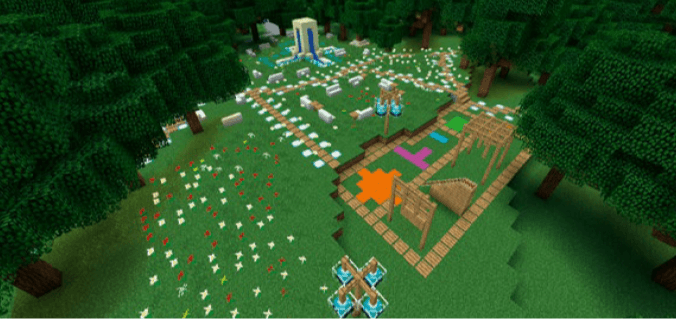IT'S ALL IN THE BALANCE
Not all communities feel represented in their cities and neighbourhoods. The answer may lie in participatory approaches to urban design
From Expo 2020 Dubai's Theme Week Insights series
The earliest known story to be written down, the Epic of Gilgamesh, may offer humanity’s first record of urban planning. The Mesopotamic poem gave clear instructions for ensuring balance within the city, dedicating one square mile to residential areas, industrial claypits and orchards.
These first approaches to city zoning are present in today’s mega-cities, but the expanding scale of urban populations and environments has also increased the distance between these zones. The result is lives lived out across often socially segmented areas that prioritise industry over nature and do not always reflect inhabitants’ identities or socio-economic statuses.
However, a global movement to re-establish balance is now underway. “Inclusion must be the centrepiece of planning better cities going forward,” says Dr Shipra Narang Suri, Chief of UN-Habitat’s Urban Practices Branch in Nairobi, Kenya. In addition to good governance, Dr Suri asserts that a key component of designing a city for inclusivity, and thus ensuring better living standards for all, hinges on involving residents in the urban design process. She points to UN-Habitat’s Block by Block initiative as one method that has encouraged participation, with residents visualising their ideal urban space using the computer game Minecraft.
Many nations are now considering citizens’ visions and ‘rights to the city’, basing legislation and urban master plans on community input. Spain’s new Urban Agenda is ensuring that high-quality architecture and development are aligned not only with the Sustainable Development Goals, but with community needs. “Our cities are not just a series of buildings or objects; they create the scenography of our lives,” asserts Iñaqui Carnicero Alonso-Colmenares, Director General of Urban Agenda and Architecture at Spain’s Ministry of Transport, Mobility and Urban Agenda. “We need to defend the quality of our urban space because it belongs to all of us.”
Enabling residents to reclaim public spaces can foster belonging. Jeff Risom, Chief Innovation Officer at urban design and research consultancy Gehl, shares how pedestrianising Times Square in New York City has transformed it into a vibrant people-centred public space, while Living Innovation zones in San Francisco have created ‘canvases’ where people can express themselves through street art or cultural activities. “By taking away barriers to entry, it essentially allows talent, entrepreneurship and energy to flow in these communities in an organic way,” he explains.
Good urban planning also requires design to keep up with shifting societal needs. Daniel Gribbin, WSP Middle East’s Corporate Sustainability Lead, sees a future of co-working spaces, nurseries and crèches integrated within buildings, though he warns the challenge for city planners lies in retrofitting older cities. “We don’t always have the opportunity that we have in Saudi Arabia, for example. We have cities in Europe and North America that are hundreds of years old.”
What works for each community in each city may vary. What’s clear is that to ensure cities meet the needs of residents, participatory urban design and planning is paramount. “Too often we have similar thinking and similar minds. We need diversity of thought and input from users of the city,” says Gribbin. Ultimately, ensuring that participation, identity and inclusivity are part of the bedrock of our cities means that people will no longer need to work to live in their cities. Instead, cities will work for their inhabitants.
Our cities are of inhabitants not just a series of buildings or objects; they create the scenography of our lives
Iñaqui Carnicero Alonso-Colmenares, Director General of Urban Agenda and Architecture, Ministry of Transport, Mobility and Urban Agenda, Spain
Participatory urban planning is about including all stakeholders as city designers
The UN’s Block by Block urban co-creation initiative has funded Minecraft projects in Mozambique, China and Palestine
CHECKLIST
Pedestrianise cities to revitalise public spaces. This can result in valuable artistic expression and a renewed sense of belonging and ownership among residents
Building design must cater to changing societal trends such as co- and remoteworking lifestyles and integrated family-and work lives
Encourage community participation to help city planners not just understand the needs of residents, but also ensure that urban areas reflect the cultural and socioeconomic identities
DID YOU KNOW?
In response to citizens’ frustration with the red tape involved in undertaking simple improvement projects, Bologna, Italy, established engagement laboratories where city staff and residents can co-design initiatives that revitalise the city. To date, the labs have cultivated more than 400 collaborative projects, including urban cleanups, and converting dilapidated buildings into cultural institutions.
We'd love to connect with you
For general enquiries, please fill out the contact form or send an email to impact@expodubaigroup.ae


